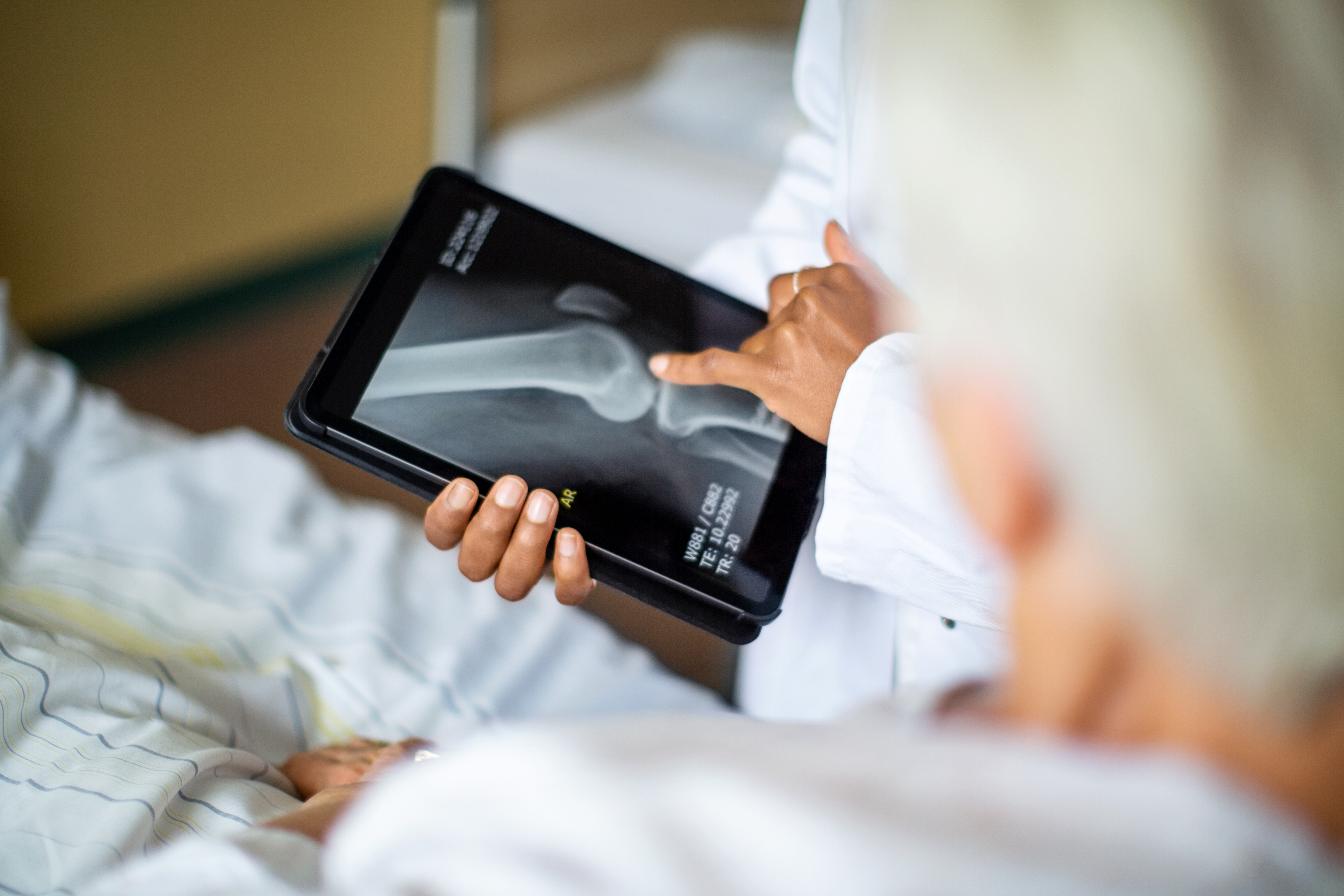Healing broken bones could get easier with a device that provides both a scaffold for the bone to grow on and electrical stimulation to urge it forward, University of Connecticut engineers reported on June 27 in the Journal of Nano Energy.
Although minor bone breaks usually heal on their own, large fractures with shattered or missing chunks of bone are more difficult to repair. Applying a tiny electrical field to the site of the fracture to mimic the body’s natural electrical field helps the cells regenerate. But the medical devices that do this are usually bulky, rely on electrical wires or toxic batteries, require invasive removal surgery, and can’t do much for serious injuries.
Now, a group of biomedical engineers from UConn have developed a scaffold of non-toxic polymer that also generates a controllable electrical field to encourage bone growth. The scaffold helps the body bridge large fractures. Although many scientists are exploring the use of scaffolding to encourage bone growth, pairing it with electrical stimulation is new.
The team demonstrated the device in mice with skull fractures.
The electrical voltage the scaffold generates is very small, just a few millivolts. And uniquely for this type of device, the voltage is generated via remotely-controlled ultrasound. The ultrasound vibrates the polymer scaffolding, which then creates an electrical field (materials that create electricity from vibration, or vice versa, are called piezoelectric.) To help heal a thigh fracture, for example, the polymer scaffold can be implanted across the broken bone. Later, the person with the broken bone can wave the ultrasound wand over their own thigh themselves. No need for batteries, and no need for invasive removal surgery once the bone is healed.
“The electrical field relates to the natural signal generated by your body at the injury location. We can sustain that voltage, on demand and reversible,” for however long is needed using ultrasound, says UConn biomedical engineer Thanh Nguyen. The piezoelectric polymer Nguyen and his colleagues use to build the scaffold is called poly(L-lactic acid), or PLLA. In addition to being non-toxic and piezoelectric, PLLA gradually dissolves in the body over time, disappearing as the new bone grows.
“The electric field created by the piezoelectric PLLA scaffold seems to attract bone cells to the site of the fracture, and promote stem cells to evolve into bone cells. This technology can possibly be combined with other factors to facilitate regeneration of other tissues, like cartilage, muscles, or nerves,” says Ritopa Das, a graduate student in Nguyen group and the first author of the published paper.
Currently, Nguyen and his colleagues are working to make the polymer more favorable to bone growth, so that it heals a large fracture more quickly. They are also trying to understand why electrical fields encourage bone growth at all. Bone itself is somewhat piezoelectric, generating a surface charge when the bone is stressed by everyday life activities. That surface charge encourages more bone to grow. But scientists don’t know whether it’s because it helps cells stick to the surface of the bone, or whether it makes the cells themselves more active.
“Once we understand the mechanism, we can devise a better way to improve the material and the whole approach of tissue stimulation,” Nguyen says.
This work was supported by the National Institutes of Health.



